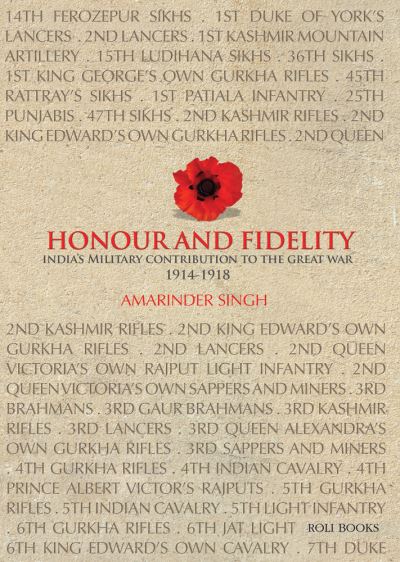
The First World War is tremendously significant to India's history. Largely considered a European war, it actually involved the participation of more than a hundred countries, allowing for it to be also known as, The Great War. In 1914 it was thought by Indian political leaders that offering support to the British would further the cause of India's independence. Accordingly, Indian soldiers were sent to fight alongside the British in Mesopotamia (modern-day Iraq), Egypt, Palestine, France, Aden, Belgium, East Africa, Gallipoli and Salonika. About twenty-five princely states contributed over 26,000 combatants. The Dalai Lama offered his support through Tibetan troops, and Gurkhas were deployed from Nepal as well. They accompanied Britain's soldiers in the artillery, cavalry, infantry, engineers, signals service, sappers, and miners, arms of the army. Indian services to Britain extended to the Royal Navy as well as the Queen Alexandra's Imperial Military Nursing Service. Indian troops who fought in Europe, had stepped outside their homeland, across the kala pani, for the first time. The sophistication of the artillery used abroad, required remarkable adaptation on the part of the soldiers. The drastically different landscape and colder weather was a shock as well. Socially too, they felt displaced among the Europeans, with their vastly different cultures and mannerisms. This was a very new scenario for Indian men; to fight side-by-side the people who were their colonisers back home. Though the Indian combatants received care matching their British counterparts, a close eye was kept on their outings, making them feel trapped. The entire experience of fighting overseas was culturally alienating for many Indians, as mentioned in their letters home, which were also often subject to military censorship. Though mentally ill-equipped to deal with an emotional and physical relocation as vast as this, Indian soldiers fought valiantly. Inder Singh, in a letter back home from the Somme in September 1916, wrote, 'It is quite impossible that I should return alive. [But] don't be grieved at my death, because I shall die arms in hand, wearing the warrior's clothes. This is the most happy death that anyone can die'. By the end of the war, about 60,000 troops from India had fought for Britain. Eleven Victoria Crosses were awarded and over 13,000 gallantry medals were earned. Despite India backing its efforts during the Great War, Britain's denial to grant India independence, created conflict and unrest among Indians, leading to the beginning of the uprising for independence. The author, Captain Amarinder Singh is himself a product of the Indian army. He served as ADC to the GOC-in-C, Western Command, during the 1965 war with Pakistan. A published military historian, he painstakingly retraces the footsteps of the Indian battalions during the First World War, using official battle details, war diaries, and maps.
| ISBN: | 9788174369888 |
| Publication date: | 11th November 2015 |
| Author: | Amarinder Singh |
| Publisher: | Roli Books |
| Format: | Hardback |
| Pagination: | 340 pages |
| Series: | Roli Books |
| Genres: |
Asian history First World War |